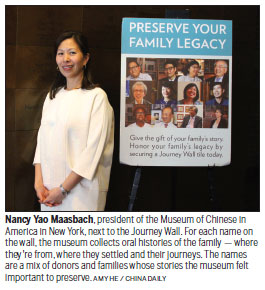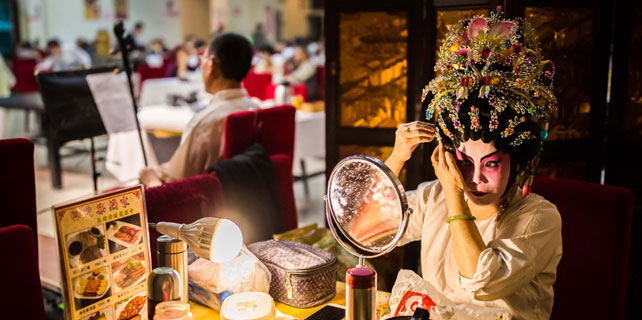Journey Wall at MOCA tells immigrant tales

As you walk into the Museum of Chinese in America in New York's Chinatown, to your left is what the museum calls its Journey Wall, adorned with the names of Chinese-American families who immigrated to the US and settled across the country.
The wall, designed by renowned architect Maya Lin, Medal of Honor recipient and designer of the Vietnam Veterans Memorial, is the museum's attempt to build a trove of Chinese-American oral histories, encourage philanthropy in the Chinese community and preserve an underrepresented facet of US history.
"What we're trying to do is help preserve the family legacy, help generations talk to each other, provide that safe space to open up and share some of those things, where too often, because of the burden of the Chinese Exclusion Act, our Chinese families here were silenced," said Nancy Yao Maasbach, president of the Museum of Chinese in America (MOCA).
"We're not free to speak about things. We've practically been trained to be reserved, quiet, not make a fuss, do well, have a safe job, go about things, don't try to get too much attention on yourself. That's really partially the burden of the Chinese Exclusion Act, because we were excluded," she said.
The wall is simultaneously an art installation, a collection of oral histories, and a donor wall; the museum accommodates 10 new families on the wall each year, a mix of families who give either $10,000, $15,000 or $25,000 to the museum, and whose families have histories that the museum feels they want to have a record of before the older members of the families pass away, Maasbach said.
For each family, the museum records an extensive amount of oral histories from various family members, and each family's collection takes months to compile, she said.
Families can give their histories in either Chinese or English, and MOCA already has more than 650 oral histories of families that came to America, their journeys, and what they experienced.
"Being a living history museum, we are so much about those stories, and it is through the stories that we can understand who we are, and other people can understand how similar our story is from other immigrants who have come, as well as what makes us distinct," Lin said about the exhibit on the museum's website.
There are primary recollections - from so-called "paper sons", who were born in China and obtained illegal documents stating they're blood relatives of Chinese-American citizens already in the US, students who came to the US as post doctorates, or those who fled the Chinese mainland or Taiwan because of war. There are also secondary histories from children of first-generation immigrants.
"One thing we constantly try to work on and support Chinese families on is the generational communication - [every] generation-to-generation [conversation may] have communication problems, but for Chinese-American families, you have to add on the language barriers, add on massive cultural barriers, add on historical differences," Maasbach said.
"I constantly think of some of the stories when we have multigenerational people in the interview and we're taking down their history, when the younger generation looks over to the parent and say, 'I never knew that!' or 'You never told me that,'" she said.
"Sometimes I can say there are moments in these oral histories that are quite emotional," she added.
amyhe@chinadailyusa.com
















